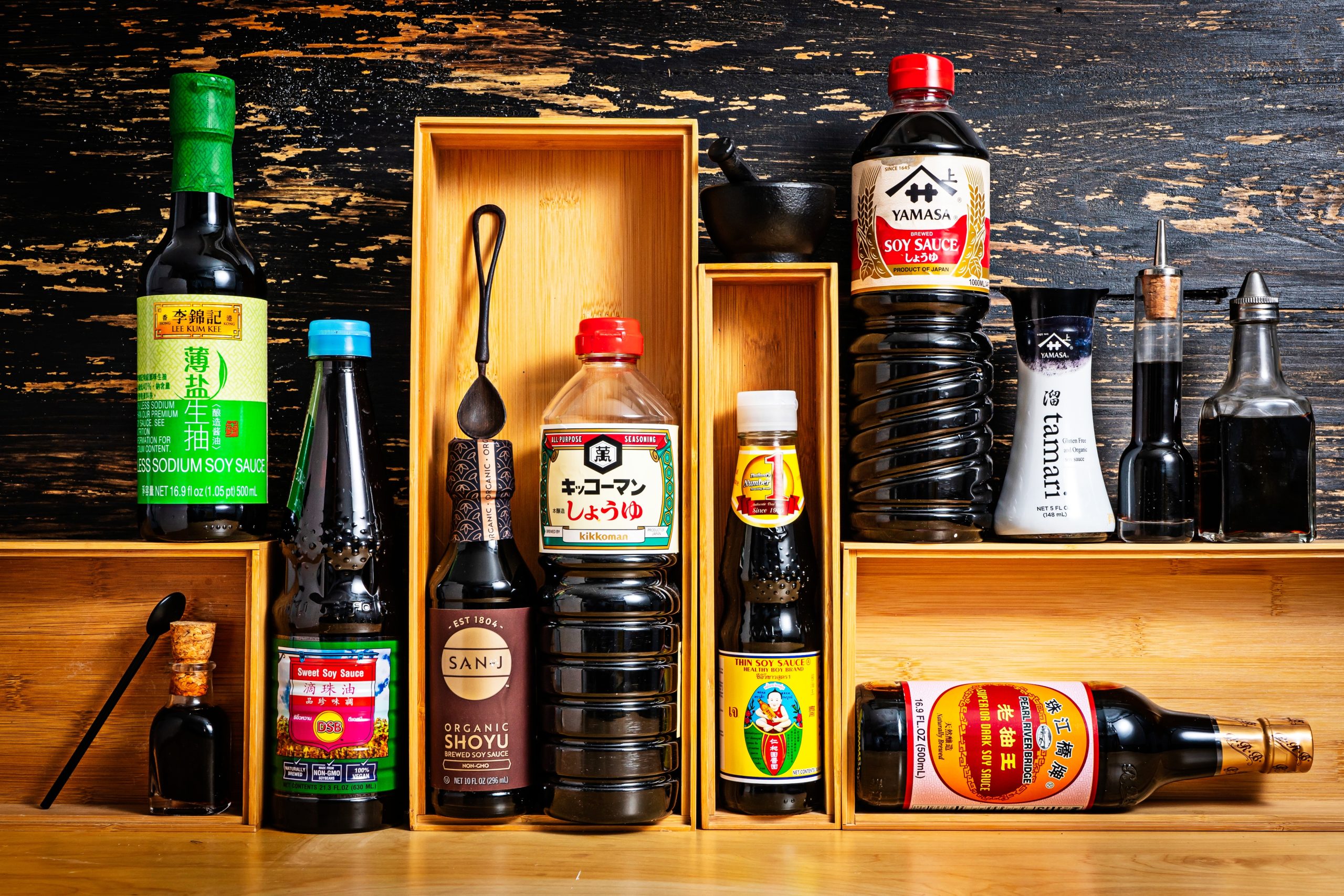The Delicate Art of Distinguishing Light vs Dark Soy Sauce: Explained
– There are three main types of soy sauce: light, dark, and sweet versions from China, Japan, and Malaysia.
– Each country or region in Asia has different ways of making soy sauce and preferred variants.
– The key ingredients in soy sauce are soy beans, grain (wheat or barley), water, and salt.
– Soy sauce has been made for the last 2,500 years in China and is one of the oldest condiments.
– Properly fermented soy sauce should have a balance of five tastes: salty, sweet, bitter, sour, and umami.
– Light soy sauce is used for dipping or in any recipe that calls for soy sauce.
– Dark soy sauce or black soy sauce is used to coat fried noodles, greens, or pork belly.
– Sweet soy sauce is used for drizzling on staples like fried rice or noodles.
– Traditionally, soy sauce is made by creating a paste from soybeans, grain, and water and fermenting it for a few months to two years.
– Chemically produced soy sauce is made by adding hydrochloric acid to the soybeans to accelerate production to two days, but it lacks the complex flavor of naturally brewed soy sauce.
– Light soy sauce is saltier than dark soy sauce, but it is thin and translucent in color.
– Light Japanese soy sauces can range in color from maple to reddish brown and are used in dishes like udon noodle soup.
– Kikkoman soy sauce is a famous Japanese brand that can be used as both a thin or dark soy sauce.
– Light Chinese soy sauce is an all-purpose soy sauce, darker than the light Japanese soy sauce.
– Dark soy sauce is more viscous and opaque, and it coats the glass and trickles away more slowly than light soy sauce.
– Dark Japanese soy sauces contain more wheat and are darker and less salty than light soy sauce.
– They are thinner in consistency than Chinese dark soy sauce.
– In Japan, dark soy sauce is used for dipping sashimi or sushi and has a rich umami flavor.
– In Chinese cooking, dark soy sauce is used in rich dishes and slow cooking.
– Dark soy sauce is commonly used in cooked stews for color and flavor.
– It creates a thicker, glossy sauce in dishes like mapo tofu.
– Dark soy sauce is different from black soy sauce and is thicker and glossier.
– It adds color, texture, and richness to dishes like braised fish.
– Black soy sauce, or cooking caramel, is less salty and has a rich, metallic taste.
– Sweet soy sauce, also known as kecap manis, is a mixture of soy sauce and palm sugar.
– It is thick and sticky and adds a sweet finish to fried noodle and rice dishes.
– Thick soy sauce and dark soy sauce are the same, while black soy sauce is the thickest.
– It is difficult to replace soy sauce accurately in recipes.
– The article provides information about alternatives to soy sauce, how long soy sauce can be stored, whether soy sauce is gluten-free, how to choose the best soy sauce, and the sodium content of soy sauce.
– Alternatives to soy sauce include miso paste, black bean paste, Worcestershire sauce, Bragg’s liquid aminos, Maggi seasoning, fish sauce, oyster sauce, and beef stock.
– Soy sauce can last for months when stored in a cool cupboard away from light and up to two years in the refrigerator.
– Most soy sauces contain gluten, but Japanese tamari sauce can be gluten-free.
– Good quality soy sauces should have soy beans, wheat or barley, salt, and water listed as the only ingredients and be labeled as “naturally brewed.”
– Soy sauce does contain high levels of salt, but using it in a dish means less additional salt is needed.
– Low-sodium soy sauces are available, but they are usually chemically produced rather than naturally brewed.
– The article discusses the difference between light and dark soy sauce in Chinese cooking.
– It mentions that the basic ingredients in a Chinese kitchen include rice vinegar, black rice vinegar, sichuan peppercorn, oyster sauce, sesame oil, shaoxing wine, cornstarch, garlic, shallots, and soy sauce.
– There are many varieties of soy sauce, but Chinese recipes often call for two basic kinds: light and dark.
– These two soy sauces may look similar, but they have distinct characteristics.
